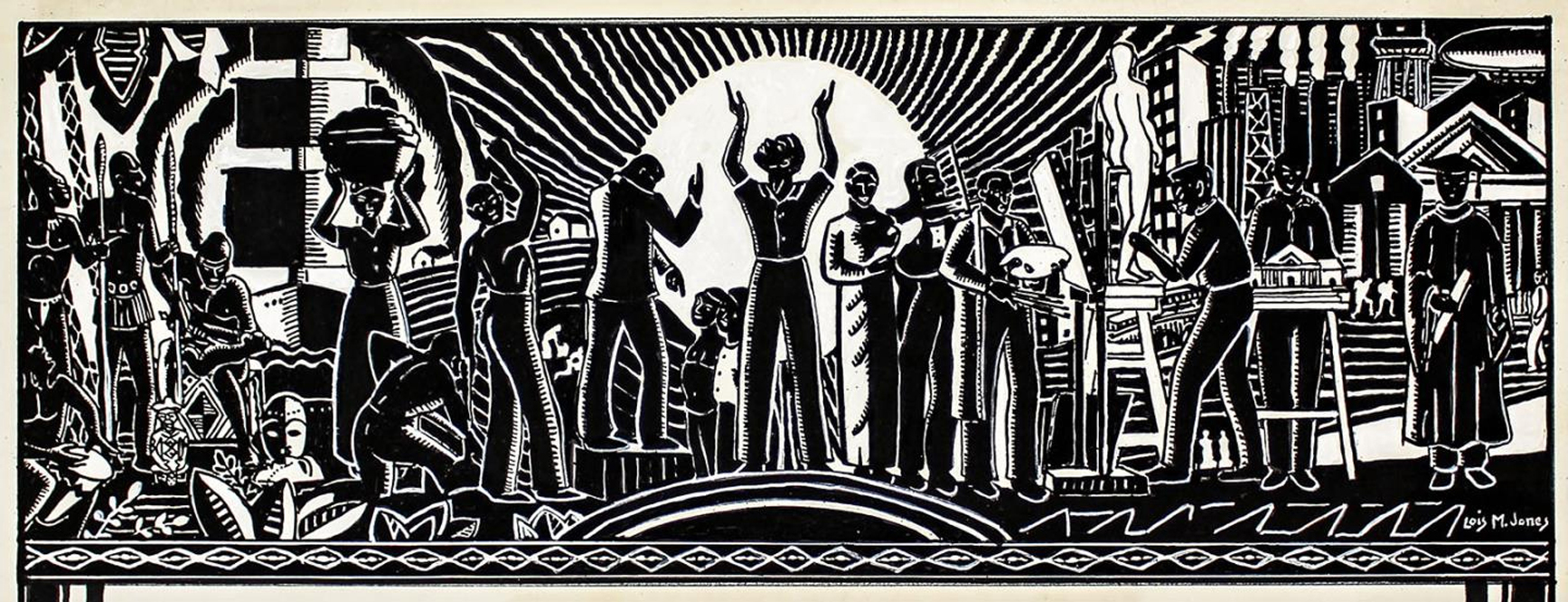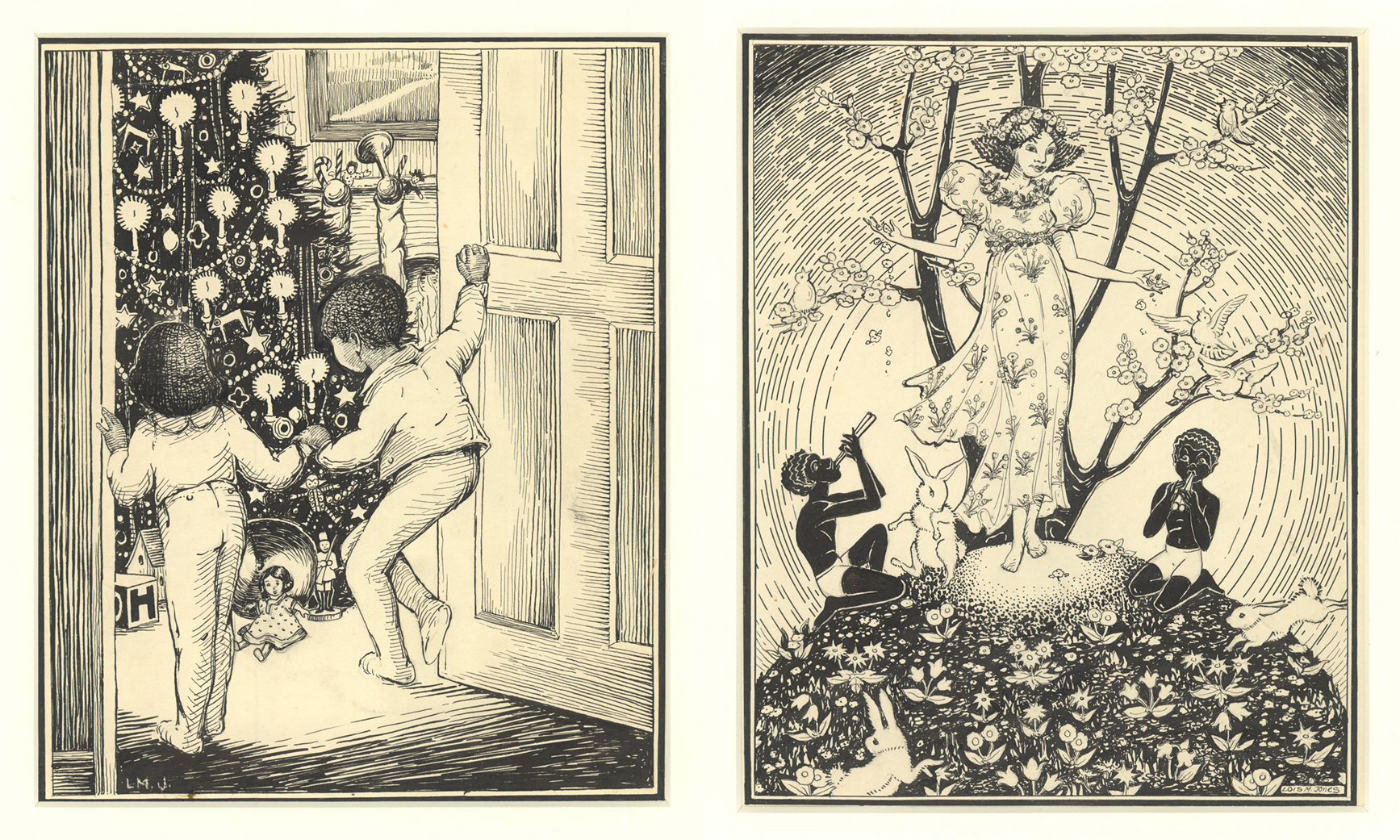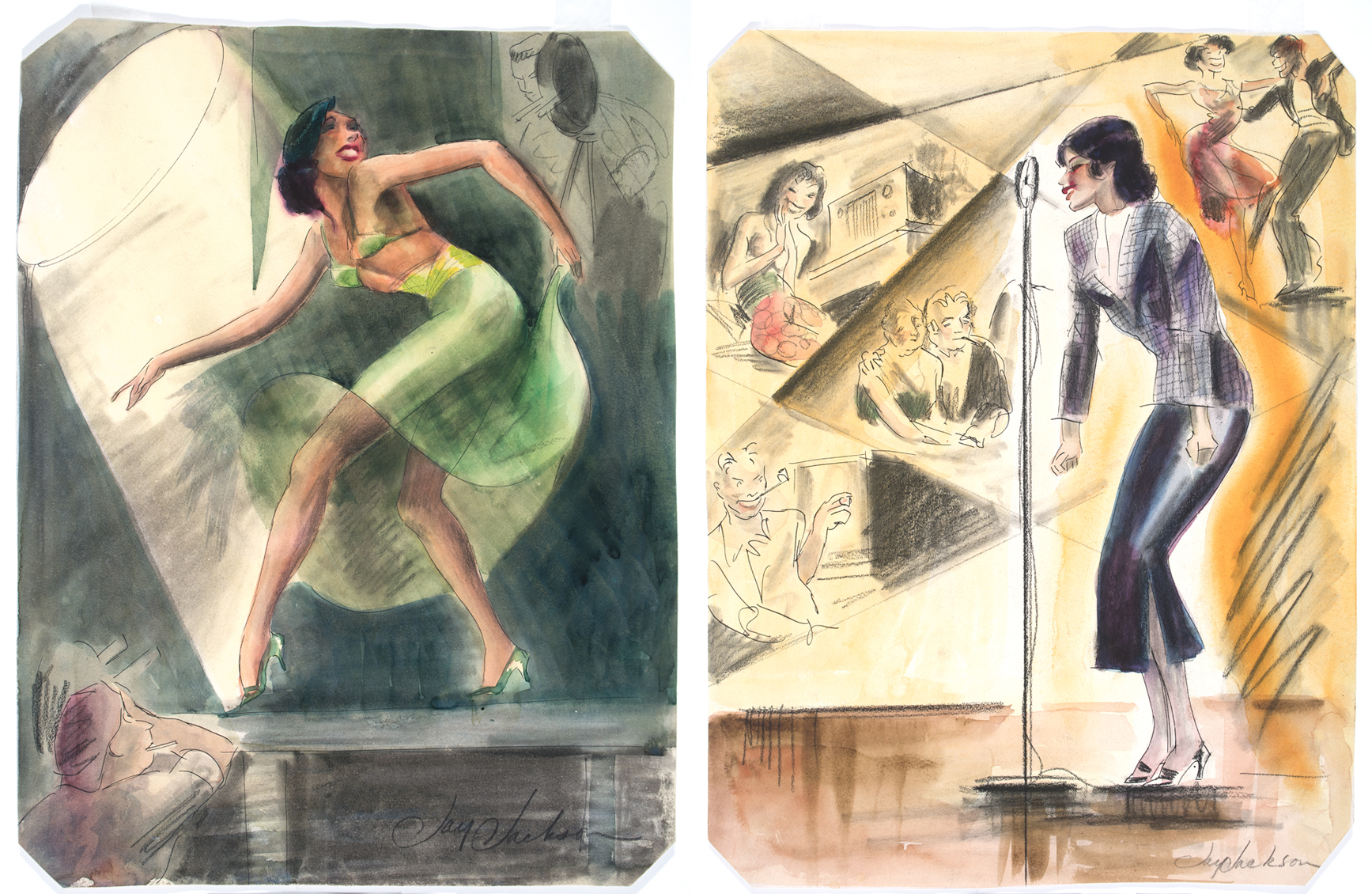As a curator, the most satisfying projects aren’t the ones where I’m already an expert in the material, but ones that involve subjects that I really want to learn more about. For our current show Jazz Age Illustration, I needed to research deeply the illustrations associated with the Harlem Renaissance. When I commenced the exhibition planning in 2019, the Museum was already acquiring from this era, but I had so much to discover—amazing artists, rich stories, and partners who generously shared their knowledge. And now as I walk through the galleries with visitors, I find that we always stop at a few specific stories.
First of all, everyone is captivated by Winold Reiss’s portrayals of Alain Locke and W. E. B. Du Bois. With their detailed depictions, the portraits focus attention on two of the intellectual leaders of the Harlem Renaissance. At a time where racist caricature was still omnipresent in the print media, portraiture was powerful to African Americans. Most of the portraits we see from this era are photographs, which were treasured for their ability to reflect individuals. Reiss seems to borrow from photography—the poses and the meticulous rendering of faces and hands feel photographic—but his intervention as an illustrator is brilliant. The artist’s decision to delineate clothing in simple line drawing against a white background keeps the focus on their features and expressions. Although he made them with publication in mind, Reiss produced portraits that are startling to encounter in person. I am delighted that the National Portrait Gallery agreed to loan these stellar works.

Loïs Mailou Jones is one of the stars of this show. Her design for Heritage is a perfect example of the graphic Art Deco style American artists embraced in the 1920s and ’30s. Carter G. Woodson’s Associated Publishers employed this style with great success, creating eye-catching covers for new studies of history, social science, and economics. A key force in the Black press, the company was a leader in publishing African American authors and illustrators in a range of disciplines. Associated Publishers was headquartered in Washington, D.C., and Woodson recruited artists like Jones and James Lesesne Wells from Howard University’s Art Department.

A bit of a chameleon throughout her career, Jones worked in a different style to illustrate Gertrude Parthenia McBrown’s Picture-Poetry Book. Her delicate ink drawings depict African American children engaged in seasonal activities like sledding and caught up in imaginative play, pretending to be grown-ups. And she pictured fairies and fantasy characters with dark skin, allowing children to see themselves represented in all elements of the book. These eight (!) illustrations are on loan from the University of Findlay’s Mazza Museum, which specializes in children’s book illustrators.

Finally, the exhibition highlights the work of African American illustrator and cartoonist Jay Jackson. His watercolor of Etta Moten Barnett provided the cover of the exhibition catalogue and one of our main marketing images. This is one of four illustrations Jackson made of this successful singer and actor in theater and film. The Museum purchased these in 2022, and Jazz Age Illustration marks their debut as a group on our walls. In person, the drawings may be smaller than you expect, but they’re powerful and joyful in expression. The illustrator captured a star’s beauty and magnetism, and his work is placed at the center of our display on Jazz Age nightlife and entertainment. Featuring jazz music, videos, sheet music, and barware, this is the jazziest section of the show.
Over the years spent planning Jazz Age Illustration, I’ve learned a lot about illustration from the Harlem Renaissance, and the learning continues. Visitors and colleagues keep teaching me about amazing artists and publications from the 1920s and ’30s, and this knowledge will help shape my work and the collection for years to come.
So many terrific partners contributed to the stories I’ve shared above, and if you’d like to hear from some of these experts (and more!), please join us on December 6, 2024, for a daylong Illustration Symposium. Anne Strachan Cross was the Lynn Herrick Sharp Curatorial Fellow in 2021-23, and she helped with every aspect of curating this show. Our amazing advisors included many specialists in the Harlem Renaissance, the Black press, jazz, and the ongoing work of African American illustrators. My thanks go out to Carlos Alejandro, Mia Curran, Chris Dingwall, Brigitte Fielder, Colette Gaiter, Caroline Goeser, Jennifer Greenhill, Valerie Harris, Laura Helton, Elizabeth Humphrey, Theresa Leininger-Miller, Victoria Rose Pass, Robyn Phillips-Pendleton, Rebecca Van Diver, and Jonathan Whitney.
Heather Campbell Coyle
Curator of American Art


